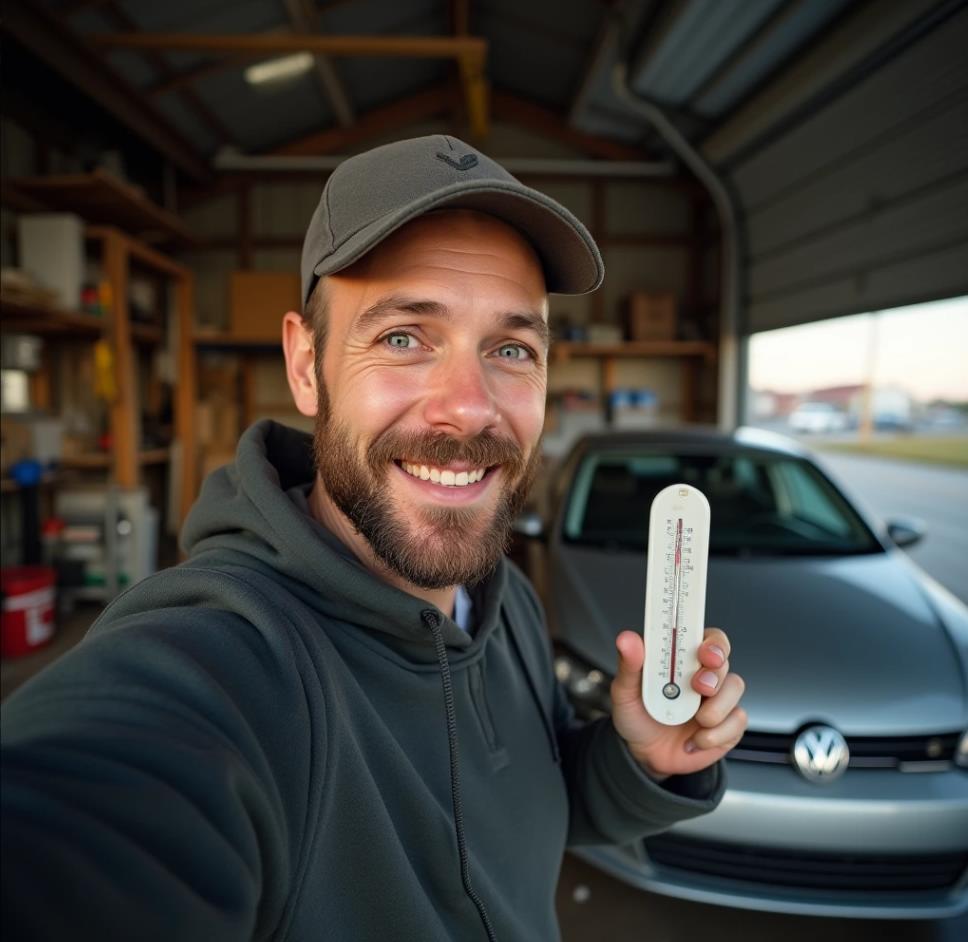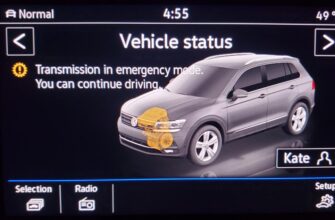You’re driving along in your Volkswagen, everything is normal, and then you notice the outside temperature display is hovering around 39° Fahrenheit (which is about 4° Celsius). Right at that moment, you hear a distinct beep or chime from your dashboard. Your first thought might be, “What was that for?” or “Is something wrong?”
If your VW beeps specifically when the outside temperature gauge shows 39°F (or 4°C), rest assured, this is not typically a sign of a malfunction. It’s a standard, intentional safety feature built into most Volkswagen vehicles.
This beep is your car’s way of giving you a heads-up about potentially hazardous driving conditions. Let’s explain exactly why it happens and what it means for you as a driver.

The Reason Behind the Beep: Warning About Potential Ice
The primary reason your Volkswagen beeps when the outside temperature reaches 39°F (4°C) is to alert you to the increased risk of encountering icy or slippery road conditions.
It’s About Road Temperature, Not Just Air Temperature
While water freezes at 32°F (0°C), the surface temperature of the road, especially on bridges, overpasses, or shaded areas, can be colder than the ambient air temperature. At around 39°F (4°C), the road surface temperature can easily be at or below freezing, creating a risk of black ice or slippery patches, particularly if there’s any moisture present (rain, melting snow, or even just dampness).
Your VW is designed to give you this early warning slightly above the freezing point to encourage extra caution when these conditions are possible.
“My VW always beeps right at 39 degrees! Thought it was weird at first, but learned it’s just a reminder that roads could be icy even if the air is a bit warmer than freezing.” – A seasoned VW owner
What Happens When It Hits 39°F (4°C)
When your Volkswagen’s outside temperature sensor reads approximately 39°F (4°C) and you are typically moving above a very low speed, you will usually experience:
- A single chime or beep.
- The outside temperature reading might flash briefly, or a snowflake symbol might appear on your dashboard display, indicating the low-temperature warning is active.
This alert is typically a one-time event per ignition cycle as the temperature drops to that threshold. It’s not a continuous or repeated beeping (unless the temperature fluctuates exactly around that mark).
Can You Turn Off the 39-Degree Beep in Your VW?
For most Volkswagen models, the 39°F (4°C) low-temperature warning beep cannot be permanently disabled through standard user settings in the infotainment system or instrument cluster menus.
A Built-In Safety Feature
Volkswagen, like many other manufacturers (especially German brands), considers this a non-negotiable safety alert, designed to make you aware of potential driving hazards. Because it’s tied to safety, they generally do not provide an easy option for drivers to switch it off.
“Asked the dealer if they could turn off the 39-degree beep on my Golf, and they said no. Apparently, it’s a hard-coded safety thing you can’t disable in the normal settings.” – A VW owner seeking a quiet ride
While standard menus usually don’t offer a way to turn it off, some advanced diagnostic tools (like VCDS or OBDeleven) may offer options on certain models to adjust the temperature threshold at which the warning activates. However, this requires specific software and knowledge and is not something most owners can do themselves.
So, while you can’t typically turn off the beep, understanding its purpose can help you appreciate it as a reminder to drive a little more cautiously when temperatures are hovering around freezing.
Related Volkswagen & Warning Guides
Understanding the various indicators and alerts your Volkswagen uses is part of being a prepared owner.
- If your VW is making other beeping noises that aren’t temperature related, our general guide Why Is My Toyota Beeping While Driving? (which covers various reasons for car beeping) might offer some insights into other potential sources of sound, although the specific causes can vary by make.
- Volkswagen uses various symbols and indicators. If you’re curious about others, check out guides like Demystifying the Green Foot Symbol in Your Volkswagen.
Frequently Asked Questions (FAQ)
Q: Why does my VW beep at exactly 39 degrees Fahrenheit?
A: Your Volkswagen beeps at 39°F (or 4°C) to alert you that outside temperatures are low enough that the road surface could be at or below freezing, increasing the risk of ice or slippery conditions, particularly on bridges and shaded areas.
Q: Can I turn off the 39-degree temperature beep?
A: No, in most Volkswagen models, the low-temperature warning beep at 39°F (4°C) cannot be turned off through standard user settings in the vehicle’s menus. It is considered a fixed safety feature.
Q: Is the beep a sign that something is wrong with the car?
A: No, the beep itself is not typically a sign of a malfunction. It means the outside temperature sensor is working correctly and the vehicle’s safety system is issuing its standard low-temperature alert.
Q: Does the beep happen every time it’s 39 degrees?
A: The beep usually occurs once per ignition cycle when the outside temperature drops to or passes through the 39°F (4°C) threshold for the first time during that drive. It typically won’t beep repeatedly if you continue driving at that temperature unless the temperature fluctuates significantly.
Q: Is 39°F really cold enough for ice?
A: Yes, while water freezes at 32°F (0°C), road surface temperatures can be several degrees colder than the air temperature due to factors like wind chill and thermal radiation, especially on surfaces exposed to air from all sides like bridges. 39°F is a common threshold for vehicles to warn of potential ice risk.
Conclusion
That beep you hear in your Volkswagen at 39 degrees Fahrenheit (or 4 degrees Celsius) is a simple but effective low-temperature warning. It’s your truck’s way of reminding you that conditions are right for potential ice on the roads, even if the air temperature is slightly above freezing. While this safety alert cannot typically be disabled through your vehicle’s standard settings, understanding its purpose can help you drive more cautiously during colder weather. So, the next time you hear that familiar chime, take it as a cue to be extra mindful of the road surface.








